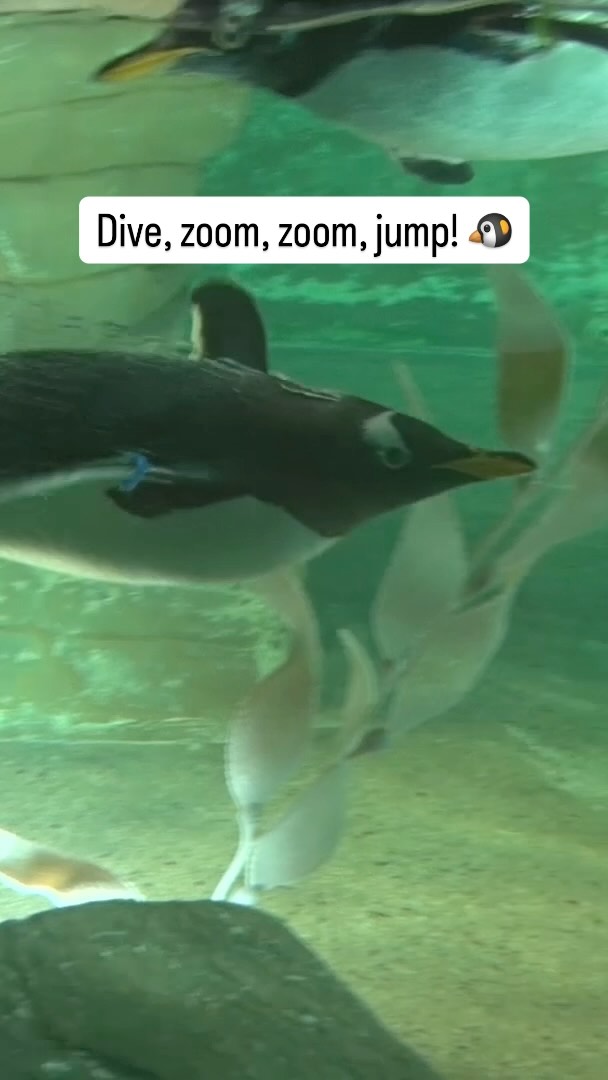- The habitat and environmental adaptations of the gentoo penguin, focusing on temperature tolerances and living conditions in Antarctica.
- The behavioral and physiological traits that enable gentoo penguins to thrive in cold water.
- Reproduction, lifecycle, and social structure of gentoo penguins in their natural environment.
- Conservation efforts, challenges, and the impact of climate change on gentoo penguin populations.
- The role of zoological institutions and wildlife conservation in supporting and preserving gentoo penguins.
Gentoo penguins, native to Antarctica, are remarkable creatures adapted to survive in frigid environments. The habitat they call home experiences temperatures of 38-40°F, with surrounding waters slightly warmer at 40-45°F. These conditions require specialized adaptations, both behavioral and physiological, to sustain their populations.
These flightless birds have evolved various physical adaptations to withstand harsh cold climates. A thick layer of blubber provides essential insulation against freezing temperatures, while dense feathers offer waterproofing, crucial for an aquatic lifestyle. Their streamlined bodies and powerful flippers make them adept swimmers, capable of reaching speeds up to 22 miles per hour, helping them evade predators like leopard seals.
The diet of gentoo penguins primarily consists of krill, fish, and squid. Their hunting skills are honed through excellent underwater vision and agility. While foraging in the icy waters, gentoos can dive to depths of 200 meters, although they typically stay closer to the surface. Their feeding habits not only support their survival but also play a vital role in the Antarctic ecosystem, influencing the marine food web.
Beyond their physical capabilities, gentoo penguins exhibit intriguing social behaviors. They are known for their communal nesting habits, often forming large breeding colonies on rocky coastlines. These colonies act as crucial social structures where penguins share responsibilities such as incubation and chick-rearing. Gentoo pairs typically produce two eggs per breeding season, and both parents partake in the nurturing duties.
The lifecycle of a gentoo penguin is intricate, with breeding usually taking place in spring and early summer. Chicks hatch around five weeks after the eggs are laid, entering the nursery phase where they are protected and fed by both parents until they are ready to venture out independently. This collaborative parenting model strengthens their chances of survival in a hostile environment.
However, the existence of gentoo penguins is under threat due to climate change and human activities. Rising temperatures lead to the melting of ice, affecting breeding sites and food availability. Additionally, overfishing poses a direct threat to their food sources, disrupting the delicate balance of the Antarctic ecosystem. These factors underscore the need for comprehensive conservation efforts to protect gentoo penguins and their habitat.
Conservation of these penguins involves multiple strategies. Protective measures include establishing marine protected areas to safeguard critical habitats and regulate fishing activities. Furthermore, ongoing research is essential to monitor their populations and understand the impacts of environmental changes.
Zoological institutions play a pivotal role in conservation by raising awareness and supporting breeding programs. Captive breeding initiatives not only offer a sanctuary for gentoo penguins but also provide valuable insights into their biology and behavior, informing conservation strategies in the wild.
Efforts in wildlife conservation, coupled with international cooperation, are crucial in mitigating the impact of climate change on gentoo penguin populations. By addressing threats such as habitat loss and food scarcity, we can help ensure the survival of these remarkable creatures.
In summary, gentoo penguins narrate a tale of resilience and adaptation to some of the planet’s harshest climates. Their survival depends on a delicate equilibrium between their natural adaptations and the overarching challenges imposed by a changing world. The combined efforts of conservationists, researchers, and global communities are vital in preserving the future of the gentoo penguin, a sentinel species of the Antarctic ecosystem.
*****
Source Description
The gentoo penguin is native to Antarctica so their habitat is 38-40°F and the water is 40-45°F.

